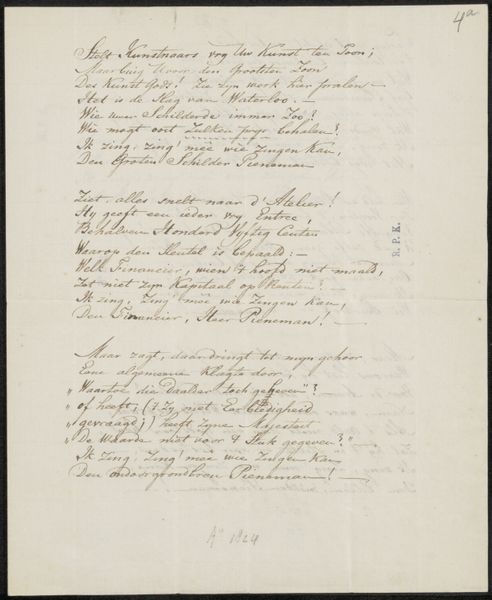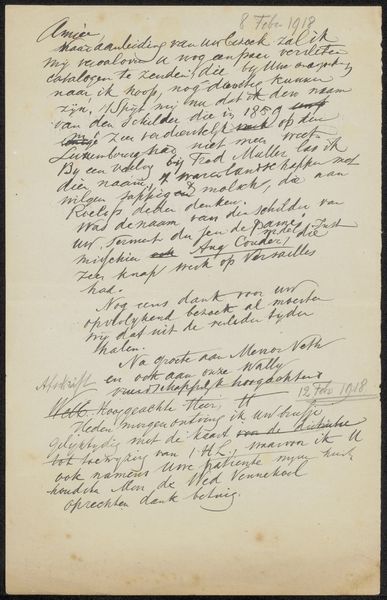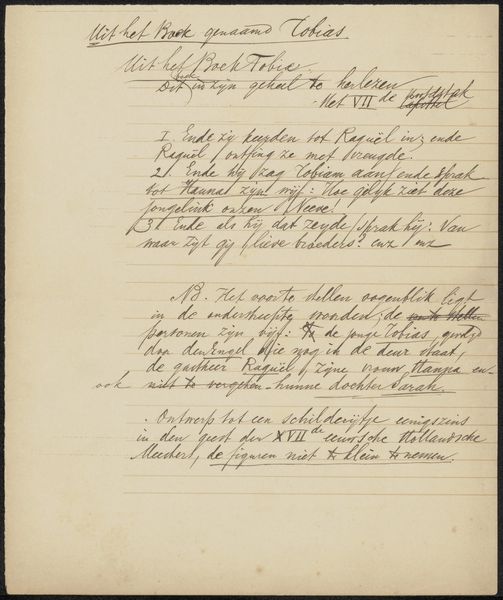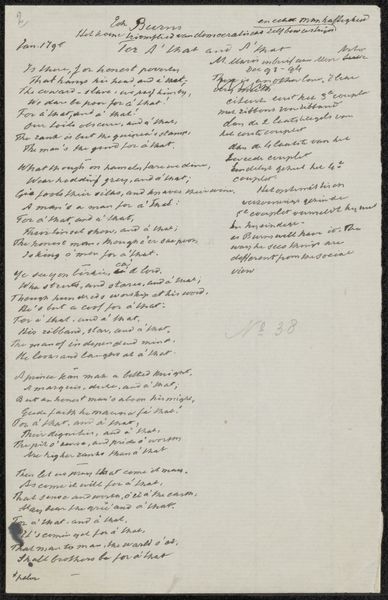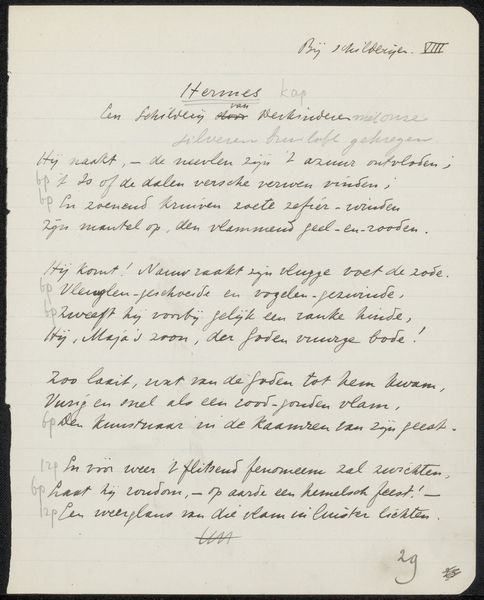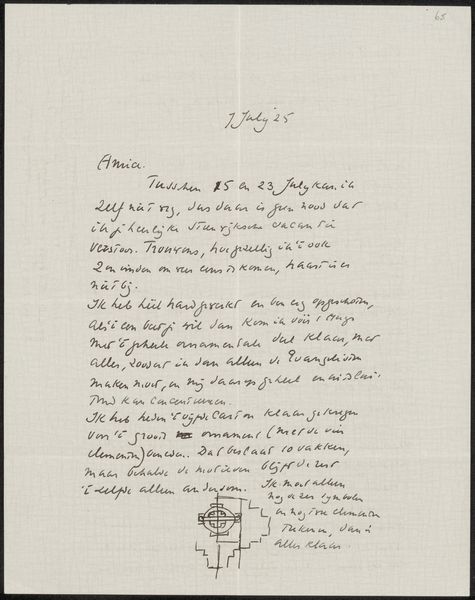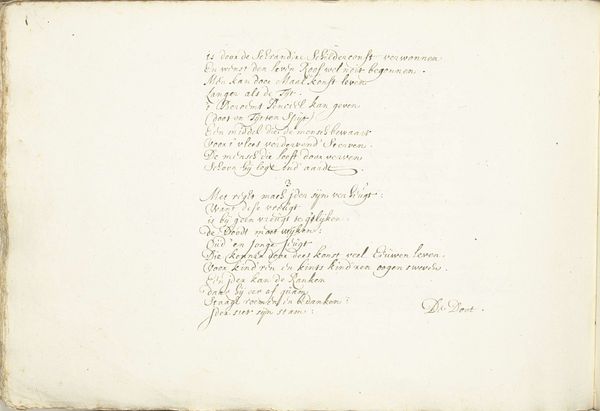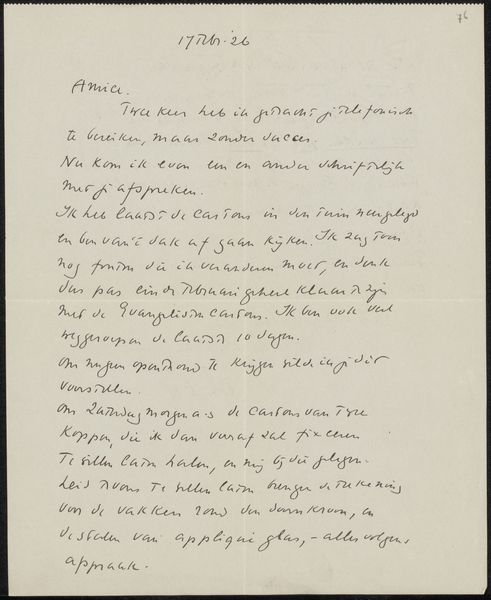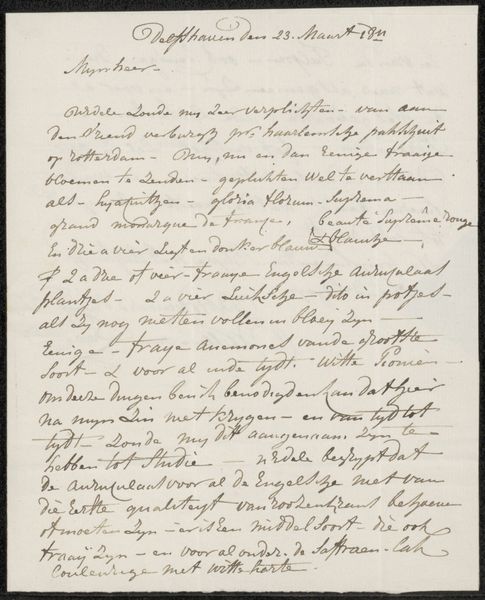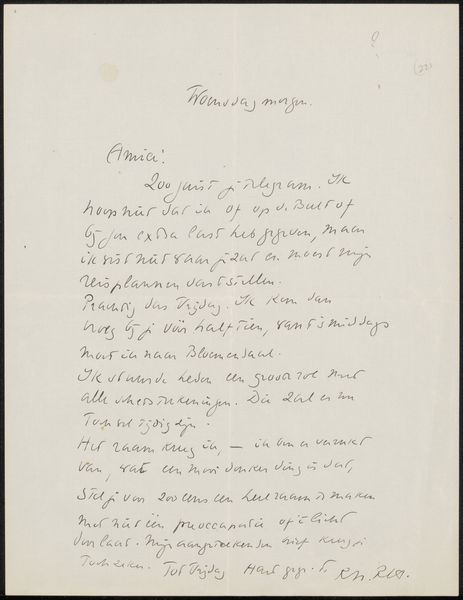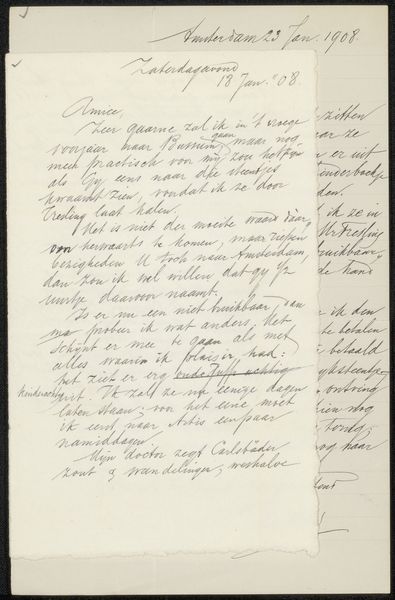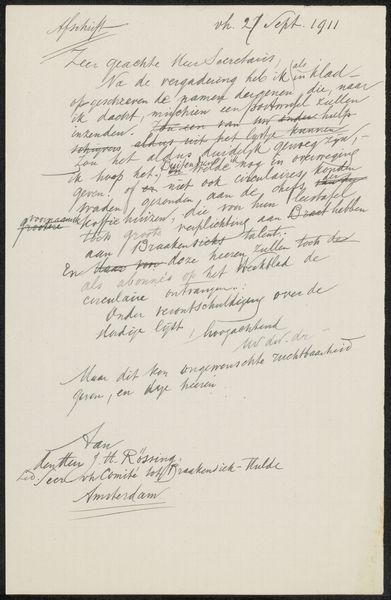
drawing, textile, paper, ink
#
drawing
#
textile
#
paper
#
ink
#
calligraphy
Copyright: Rijks Museum: Open Domain
Curator: Here we have August Allebé’s “Gedicht aan Jan Veth,” created sometime between 1905 and 1909. The piece, currently residing at the Rijksmuseum, incorporates drawing and textile elements, primarily ink on paper. It also features some calligraphy, making it a complex blend of mediums. Editor: My first impression is somber, almost melancholy. The faded ink and the close-packed text create a sense of intense, perhaps mournful reflection. There's a visual density here that mirrors what I imagine to be the emotional weight of the poem itself. Curator: Absolutely. Looking at the texture, you can appreciate how Allebé skillfully balanced positive and negative spaces, creating a unique sense of rhythm across the page. Notice how some letters are more densely inked than others; he understood the weight each stroke could carry. Editor: I agree. What also strikes me is the intimacy suggested by the handwriting itself. This feels intensely personal, a direct communication perhaps meant only for the eyes of Jan Veth. What was the relationship between them, and what events might have prompted this heartfelt address? Curator: From a formal standpoint, the use of the entire page, right to its very edges, showcases Allebé's confident hand. The tight grouping certainly concentrates one’s focus and also generates this sense of pressure, squeezing the emotions into the container of this paper. The density, as you say, speaks volumes. Editor: The poem seems to speak about enduring sadness and loss, if my crude attempt at deciphering this antiquated script serves. Situating this work within the broader cultural moment, we might consider it alongside other explorations of grief or trauma that surface from this era. Did any specific sociopolitical events shape its emotional tenor? Curator: That is certainly valid and relevant, yet it does not discount how Allebé controlled visual space, playing with light and dark using nothing more than pen and ink. Look at how lines repeat, creating subtle patterns that mimic—perhaps echo—the sounds and rhythms of poetry. Editor: Yes, his choice of a handwritten letter versus typed script adds a potent layer of vulnerability to the exchange between the artist and his subject. The labor itself becomes a form of expression, underlining both emotion and intent, and I imagine that seeing this now may lead viewers to consider our own interactions of correspondence. Curator: Precisely, and these formal choices allow a deeper understanding of this artist’s technical ability and thoughtful application thereof. Editor: Considering the broader context, as well as its materiality allows this artwork to become much more than ink on paper, evolving it into an expression of longing.
Comments
No comments
Be the first to comment and join the conversation on the ultimate creative platform.
